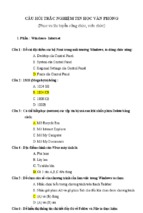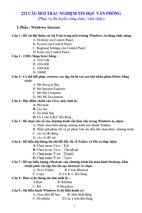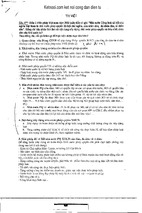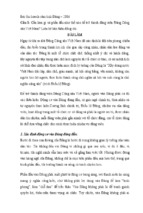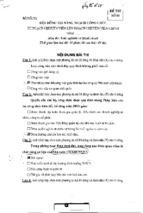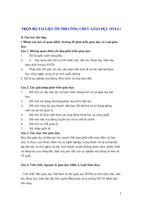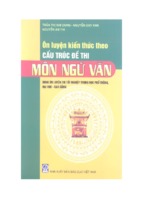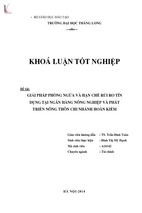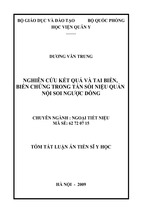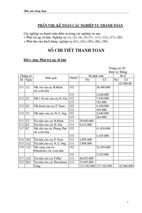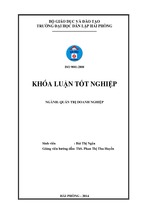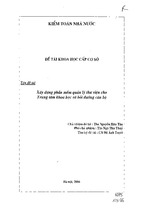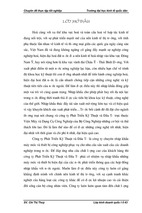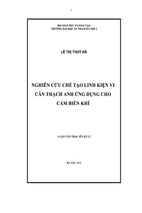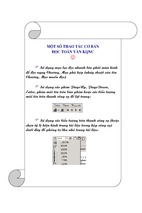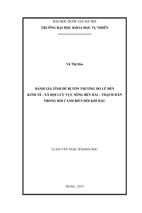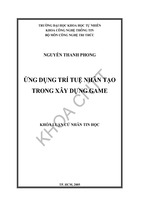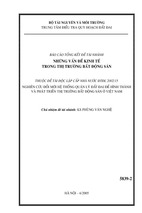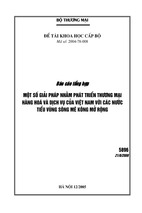INTRODUCING QUALITATIVE METHODS provides a series of volumes which introduce qualitative research to the student and beginning researcher. The approach is interdisciplinary and international. A distinc�tive feature of these volumes is the helpful student exercises.
One stream of the series provides texts on the key methodologies used in qualitative research. The other stream contains books on qualitative research for different disciplines or occupations. Both streams cover the basic literature in a clear and accessible style, but also cover the ’cutting edge’ issues in the area.
CATEGORIES IN TEXT AND TALK
INTRODUCING QUALITATIVE METHODS provides a series of volumes
which introduce qualitative research to the student and beginning
researcher. The approach is interdisciplinary and international. A distinc›
tive feature of these volumes is the helpful student exercises.
One stream of the series provides texts on the key methodologies used in
qualitative research. The other stream contains books on qualitative
research for different disciplines or occupations. Both streams cover the
basic literature in a clear and accessible style, but also cover the ’cutting
edge’ issues in the area.
SERIES EDITOR
David Silverman (Goldsmiths College)
EDITORIAL BOARD
Michael Bloor (University of Wales, Cardiff)
Barbara Czarniawska-Joerges (University of Gothenburg)
Norman Denzin (University of Illinois, Champagne)
Barry Glassner (University of Southern California)
Jaber Gubrium (University of Florida, Gainesville)
Anne Murcott (South Bank University)
Jonathan Potter (Loughborough University)
TITLES IN SERIES
Doing Conversational Analysis: A Practical Guide
Paul ten Have
Using Foucault's Methods
Gavin Kendall and Gary Wickham
The Quality of Qualitative Evaluation
Clive Seale
Qualitative Evaluation
Ian Shaw
Researching Life Stories and Family Histories
Robert L. Miller
Categories in Text and Talk: A Practical Introduction to Categorization Analysis
Georgia Lepper
CATEGORIES IN TEXT AND TALK
A Practical Introduction to
Categorization Analysis
Georgia Lepper
SAGE Publications
London
Thousand Oaks
New Delhi
© Georgia Lepper 2000
First published 2000
Apart from any fair dealing for the purposes of research or private
study, or criticism or review, as permitted under the Copyright,
Designs and Patents Act, 1988, this publication may not be reproduced,
stored or transmitted in any form, or by any means, only with the prior
permission in writing of the publishers, or in the case of reprographic
reproduction, in accordance with the terms of licences issued by the
Copyright Licensing Agency. Inquiries concerning reproduction
outside those terms should be sent to the publishers.
$
SAGE Publications Ltd
6 Bonhill Street
London EC2A4PU
SAGE Publications Inc.
2455 Teller Road
Thousand Oaks, California 91320
SAGE Publications India Pvt Ltd
32, M-Block Market
Greater Kailash -1
New Delhi 110 048
British Library Cataloguing in Publication data
A catalogue record for this book is available from the British Library
ISBN 0 7619 5666 2 ISBN-13: 978-0-7619-5666-2
ISBN 0 7619 56670(pbk) ISBN-13: 978-0-7619-5667-9 (pbk)
Library of Congress catalog card number 131532
Typeset by Type Study, Scarborough, North Yorkshire
Contents
Preface
1
xi
Introducing Categorization Analysis
What is categorization analysis?
Sacks and his work
Sacks’ methods and generalizability
Subsequent developments
How to use this book
1
1
2
4
5
8
Recommended reading
9
PART I PRACTISING THE ART OF CATEGORIZATION
ANALYSIS
11
First Principles
The baby cried
Exercise 2.1
Exercise 2.2
Membership categorization devices
Exercise 2.3
Exercise 2.4
Category bound activities
Exercise 2.5
Location categories
Location analysis
Membership analysis
Topic or activity analysis
Exercise 2.6
13
14
14
16
17
18
23
24
24
25
26
27
27
28
Summary
Recommended reading
29
29
Practising the Art of Categorization Analysis: Further
Developments
Versions
Exercise 3.1
Predicates
31
32
33
33
vi
CATEGORIES IN TEXT AND TALK
Exercise 3.2
Analysing disjunctive categories
Exercise 3.3
Indexicals, or ’pro-terms’
Hierarchies of relevance
Exercise 3.4
Wider applications of Categorization Analysis
The psychology of the individual
Social psychology
Exercise 3.5
Story-telling and narrative analysis
35
36
38
39
40
41
41
42
43
44
44
Summary
Recommended reading
45
45
PART II ANALYSING CULTURE USING TALK, TEXT
AND IMAGE
47
Analysing Context
A newspaper headline
Exercise 4.1
Context and culture
What is context?
How can categorization analysis contribute to the
empirical analysis of context?
Procedures
49
49
50
51
51
Summary
Recommended reading
60
61
Analysing Talk
A radio news interview
Exercise 5.1
A troublemaker
Disorderability
Accountability
Exercise 5.2
Tying and procedural consequentiality
Exercise 5.3
62
62
63
64
66
70
70
72
72
Summary
Recommended reading
73
74
Analysing Text
Text and talk
The’Logbook’
Exercise 6.1
Exercise 6.2
76
76
78
79
80
54
56
CONTENTS
9
vii
Notes on method
Comparative method
’Emic’ and ’etic’ as members’ resources
81
82
83
Summary
Recommended reading
84
84
Analysing Images
Seeing and believing
Leaving home
Exercise 7.1
The visual as social theory
Exercise 7.2
Using filmed data
Exercise 7.3
85
85
89
89
91
93
93
94
Summary
Recommended reading
94
95
IT III
97
ANALYSING NARRATIVE
What is a Narrative?
Defining the phenomenon
Labov: analysing the structure of stories
Sacks: analysing stories in conversations
Exercise 8.1
99
99
101
102
103
Summary
Recommended reading
103
104
Applying Categorization Analysis to the Study of
Naturally Occurring Stories
First analysis of a story
Exercise 9.1
Exercise 9.2
Exercise 9.3
Second stories
Exercise 9.4
Co-produced stories
Exercise 9.5
105
105
107
108
108
112
113
114
115
Summary
Recommended reading
116
117
10 Contemporary Application of Sacks' Work on
Narrative
Identifying stories in ongoing interaction
Analysis of story evaluations
118
118
121
viii
CATEGORIES IN TEXT AND TALK
Exercise 10.1
Applications
Developmental psychology
Life stories
Psychotherapy
124
124
125
126
127
Summary
Recommended reading
128
129
PART IV
ANALYSING ORGANIZATIONS
11 Background to the Study of Organizations
Institutional talk
What is an organization?
The emergence of organization theory
The relationship between ’micro’ and ’macro’ levels
of phenomena and analysis
Summary
Recommended reading
12 The Contribution of CA
Organization as structure-in-action
Exercise 12.1
The nature of organizational rationality
Exercise 12.2
The nature of power and hierarchy in organizations
Exercise 12.3
The comparative method
Summary
Recommended reading
13 A Case Study
Getting started
The analysis: ’A report of incident leading to injury’
The beginning of the report
The story continues: first
The story continues: then
Complaining
Findings
Summary
Recommended reading
PARTV
THE PRACTICE OF RESEARCH
14 Reliability and Validity
CA and science
The principle of ’next turn’ validity
Reliability
131
133
133
135
137
139
141
142
143
143
144
145
147
148
149
151
152
153
154
154
157
159
160
162
164
165
168
169
171
173
173
175
178
CONTENTS
Summary
Recommended reading
15 Working with an Extended Textual or Conversational Data:
The Uses and Abuses of Computer-■aided Analysis
Using computer-aided techniques in CA
More
Better
Different
Too much?
Recommended reading
16 Ethics in Research
Ethics
Values
Summary
Recommended reading
ix
179
180
181
181
182
184
185
187
188
189
189
191
191
192
Glossary
193
Appendix A: Transcription Notation
198
Appendix B: Sample Consent Form
200
References
202
Name index
209
Subject index
210
Preface
This book is the product of a career which crosses several disciplines. I am
about the same age as Sacks would have been had he lived. I am also
American, and was educated in a similar milieu. In those days, I encoun›
tered social science, and turned away from it, with much the same feeling
Sacks describes - a disappointment with its failure to address an ’under›
standing of the way humans do things’. It was many years later, having
returned to academic study in Britain, that I first encountered his work. I
felt immediately ’back home’ in the company of his wide interests com›
bined with the discipline of his methods. The book reflects that appreci›
ation in taking a multi-disciplinary approach. It is my hope that its readers
will find in it some of the same excitement in encountering the open space
of analytic enquiry which Categorization Analysis, practised with the
discipline and restraint which Sacks imposed on himself, can bring.
When I first started doing the analysis, I remember, faced with some
mundane text, struggling with the feeling, ’there’s nothing there’. There
were marvellous studies by those few researchers who were practising
categorization analysis, and the examples of Sacks’ own analyses from his
lectures. It was hard to get from where I was, to where they were. One of
the things which helped me was my professional training in analytic
psychotherapy, which had taught me to listen closely to the talk in the
consulting room, even when I didn’t know what was going on. With faith
built on that experience, I persevered, and soon found that concentrated
attention to seemingly trivial details in the texts I was studying was
rewarded by deepening awareness, not only when I was analysing data,
but even when I was practising my craft of psychotherapy. In writing this
book, I hoped to provide a guide to the beginning researcher to find a way
into the text or talk under study, by building an ’analytic attitude’: an atti›
tude of deep attention to the details of talk and text.
It follows from the nature of my personal and intellectual development,
that I have had the privilege of a wide variety of formative experiences
with teachers and colleagues. Colleagues within the profession of analytic
psychotherapy who support my allegiance to empirical method; col›
leagues in sociology who tolerate my psychoanalytic formation and train›
ing; friends and family who put up with my flights of intellectual energy
xii
CATEGORIES IN TEXT AND TALK
and excitement; students who get interested in the process with me, and
push my thinking ahead with their own: I thank them all.
Most of all, I have to thank David Silverman, who introduced me to
categorization analysis, and helped me to develop my practice of the
discipline in a grounded and rigorous way. He has supported every phase
of the writing of this book. Thanks are also owed to those who have helped
with the analysis and some of the data used in the examples - the ’MCD
Group’: Moira Kelly, Kay Fensom, Sally Hunt and Tim Rapley. They also
read and commented on drafts of some of these chapters, as did my
students at the University of Kent. They made me make it simpler and
better. Thanks also to Charlotte, who crafted the photo-image.
1
Introducing Categorization Analysis
CONTENTS
What is categorization analysis?
Sacks and his work
Socles' methods and generalizability
Subsequent developments
How to use this book
Recommended reading
1
2
4
5
8
9
W h a t is categorization analysis?
Data extract (Sacks, 1992a: 144)
1
2
3
Joe:
(cough) We were in an automobile discussion,
Henry: discussing the psychological motives for
Mel:
drag-racing in the streets
With this co-produced sentence, three young teenagers, members of a
therapy group, greet a new arrival who has just been introduced to them.
It comes from an 8 minute segment of data, drawn from the opening of
the session, which Sacks studied intensively over a period of several years.
Here are some of the things he was interested in:
how the speakers demonstrated their collaborative interest in a topic
(’automobile discussion’), and through it, their identity as a unit;
how the syntactic ’we’ is employed in the context to render as an
observable, ’we are a unit’;
how the participle ’drag-racing’ provides for a hearable description of
who they are, and how they want to be identified.
2
CATEGORIES IN TEXT AND TALK
Sacks comments:
We get, then, a kind of extraordinary tie between syntactic possibilities and
phenomena like social organization. That is, an extremely strong way that these
kids go about demonstrating that, for one, there is a group here, is their getting
together to put this sentence together, collaboratively.
It’s hard to figure out how they could do that right off, in anything like as
sharp a way as they picked. (1992a: 145)
Sacks goes on to demonstrate how the construction of the sentence - its
grammatical features, and the way the speakers are able to draw upon
those features - provides the evidence for an alternative understanding of
how to study language:
About the third part [Mel’s ’drag racing on the streets’ - line 3] there is no ques›
tion that it collaborates with the second in making of the first, the ’independent
clause’. Neither the second or third alone are sentences, and the two together do
not make a sentence. Only with the first is it all a sentence. So that particular
choice of participle is to be accounted for by reference to some task of social
organization, solved by reference to syntactical features. The participle, then,
becomes an object in the technology of social structures, I suppose. (1992a: 146)
The subsequent development of the technique of categorization analysis is
built on the kind of examination to which Sacks subjected this data. It is the
attempt to answer some of those questions by taking categorization as an
object in the technology of social structures, and examining how it is that
ordinary speakers employ formal features of language as a resource in
order to ’do that right off, in anything like as sharp a way as they picked’.
Sacks’ primary concerns were not about language as such, but about
social processes. His aim was to develop a natural observational method
of studying social interaction, using:
methods [which] will be reproducible descriptions in the sense that any scien›
tific description might be, such that the natural occurrences that we’re describ›
ing can yield abstract or general phenomena which need not rely on statistical
observability for their abstractness or generality. (1992a: 11)
Sacks and his w o r k
Sacks delivered much of his thinking in oral form, in the context of lectures
to his students at UCLA, and later at UCIrvine. Here are some of the titles
of the lectures in which Sacks worked on the data from this therapy group
over a period of five years:
’Hotrodders’ as a revolutionary category
Tying rules, insult sequences
INTRODUCING CATEGORIZATION ANALYSIS
3
Invitations, identification, category bound activities
Clausal construction: hot-rodding as a test
Pervasive, inexhaustible topics
’Patients with observers’ as ’performers with audience’
The dirty joke as technical object
A hall mark of Sacks’ method was the intense scrutiny to which he sub›
jected naturally occurring data - talk and text drawn from a variety of
sources. He did not approach the data in the manner of classical socio›
logical analysis, with ’operational definitions’ of social phenomena, such
as ’power’ or ’class’ or ’role’, seeking to identify the causes of the phenom›
ena. Indeed he was very critical of this approach. Instead, he asked of his
data these questions: What kind of social object is this utterance/com›
munication? What interactional work does it do in the context in which it
was employed? How does it achieve the task it seeks to do? His method
was ’bottom up’, within the tradition of analytic induction. He returned
to the same data over and over again, gradually uncovering the complex›
ity of what is happening at each moment in ongoing everyday interaction
through relentless analytic attention to the detail of the talk or text.
Sacks completed graduate training in law at Yale, where, influenced by
the teaching of Harold Lasswell, he began to think about how the law actu›
ally worked (Schegloff, 1992: xii). As we will see, how social life works was
to be the primary focus for all his later work. On Laswell’s advice, he then
went to the University of California at Berkeley to continue his graduate
studies in research, rather than pursuing the practice of law for which he
had formally trained. There he encountered Erving Goffman. Later he
collaborated with Harold Garfinkel, whom he had already met. It is from
this collaboration that much of the suicide helpline data comes which forms
an important source for the early analyses. The systematic study of every›
day life, initiated by Goffman and Garfinkel - under the titles the ’inter›
action order’ and ’ethnomethodology’ - was the major influence on Sacks’
work. Other important strands of influence were contemporary develop›
ments in philosophy and linguistics: ’ordinary language philosophy’, and
particularly Wittgenstein; and the theory of generative grammar being
developed by Chomsky. Sacks combined the two disciplines - the study of
everyday interaction, and the study of ordinary language - into a new
discipline: the study of naturally occurring conversation.
In the first lecture he gave to students in UCLA, he drew on work from
his PhD thesis based on recorded data from telephone helpline conversa›
tions between suicidal callers and telephone counsellors. He introduces
some considerations on conversational sequencing from the opening
exchange of a ’call for help’. In the manner which would characterize all
his analyses, he remarks that he ’was very puzzled by "I don’t know" in
return to "May I help you". I couldn’t figure out what they were doing
with it.’ He then makes some observations about this exchange, and in
conclusion, he makes an important point about his method:
4
CATEGORIES IN TEXT AND TALK
As a general matter, then, one can begin to look for kinds of objects that have a
base environment, that, when they get used in that environment perform a
rather simple task, but that can be used in quite different environments to do
quite other tasks. (1992a: 8)
In the second lecture, Sacks moves on to another way of considering his
suicide helpline data: he considers the classes of persons to whom the
suicidal caller might turn for help, as evidenced in the conversations he is
studying. He shows how ’ceremonial relationships’ can be understood in
relation to the way talk is constructed around everyday social interaction.
Here is evidence both of the influence of Erving Goffman, who supervised
his PhD research, and of his move away from Goffman’s model. For
Goffman, the ceremonial order precedes and makes possible everyday
interaction. For Sacks, the situated organization of the interaction, includ›
ing both the sequencing of the talk, and the deployment of ’membership’
categories - the classes of persons and actions - precedes and makes poss›
ible the ceremonial, and, by extension, the social order. Out of this insight,
the study of categorization developed into a systematic analysis of the
ways in which classes of persons - membership categories - and their
activities - category bound activities - are employed within a ’base
environment’ - a membership categorization device - to assemble the
’inference rich’, recognizable actions and descriptions which, Sacks pro›
posed, form the foundations of social order.
If the influence of Goffman can be seen in Sacks’ initial approach to his
data, so also the influence of Garfinkel is evident in the core focus of Sacks’
method: its concentration on the situated nature of the talk under study.
Garfinkel introduced into his study of everyday social interaction the
concept of indexicality - the notion that in everyday life, the meaning of
words is dependent on the context of their use. Sacks extended this concept
by applying it in a systematic way to the study of naturally occurring talk.
So the work I am doing is about talk. It is about the details of talk. In some sense
it is about how conversations work. The specific aim is, in the first instance, to
see whether actual single events are studiable and how they might be studiable,
and then what an explanation of them might look like.
Thus it is not any particular conversation, as an object, that we are primarily
interested in. Our aim is to get into a position to transform in an almost literal,
physical sense, our view of ’what happened’ from a matter of a particular inter›
action done by particular people, to a matter of interactions as a product of
machinery. We are trying to find the machinery. In order to do so we have to get
access to its products. At this point, it is conversation that provides us such
access. (Sacks, 1984a: 26-7)
Sacks' methods and
generalizability
In his later work, Sacks widened his focus of attention from the study of
single examples of situated talk, and began to consider how to treat
INTRODUCING CATEGORIZATION ANALYSIS
5
aggregates of data. In his introduction to the second set of lectures, which
contain the lectures delivered after Sacks’ move to UCIrvine, Schegloff
(1992: xi) characterizes this shift to:
an order of organization, rather than a particular practice of talking;
a class of places in an aggregate of data, rather than an excerpt;
an organizationally characterized problem or form of interactional work,
rather than an individually designed outcome;
invariances offeatures rather than context specified practices.
It could be said that this shift of analytic attention follows the practice of
what Kuhn (1970) calls ’normal science’, in moving from a natural obser›
vational method, in which Sacks was at first engaged, to a more general›
izing phase of theoretical formulation, during which observations are
tested across increasingly large samples. Sacks grounded his method in
science by arguing that an important aspect of science is that ’findings’ are
not simply things found, but the end product of a set of procedures. The
basic rule of scientific method is the reproducibility of findings, and repro›
ducibility depends on agreed and public procedures which can be fol›
lowed by anyone to produce the same findings. It follows, he argued, that
the procedures followed in scientific analysis are as important a part of
science as the findings, and that the study of procedures is therefore no
more, and no less, a legitimate object of study than any other object of
scientific enquiry.
Subsequent developments
Sacks published very little in his lifetime, and many of his papers were
only published after his premature death in an accident in 1975. The com›
plete Lectures in conversation were assembled from the notes and record›
ings of former students, and published in 1992. Sacks’ oeuvre is, therefore,
’unfinished’ work, in the sense that when he died he was still very much
in the process of developing what he expected to be a general theory of
conversational interaction. Publications which would have set out his
ideas in a systematic way were planned, but were not completed before
he died. The consequence is that his colleagues were left with a framework
theory, which they then took the responsibility for taking forward. His
closest collaborators, Schegloff and Jefferson, have been the most impor›
tant figures in that development. Primarily under their influence, the
analysis of conversational sequencing - which became known as Conver›
sation Analysis, or CA, as I will term it in this volume - has developed
over the last 25 years into an important research discipline which is used
in many branches of social science. A large corpus of work now stands,
incorporating two distinct strands of development: further development
of ’the machinery of talk’ - the general theory of conversation; and
6
CATEGORIES IN TEXT AND TALK
extensive applications of sequential analysis across a wide variety of social
science disciplines. Slowly, CA has gained acceptance in sociology depart›
ments. It has also been an important contributor to other areas of social
science - anthropology, ethnography, linguistics, and more recently, psy›
chology.
Categorization analysis - the second strand of analysis which Sacks
undertook - has had a slower and more restrained development. Schegloff
and Jefferson continued to develop theory and method of sequential
analysis, but very little work on categorization was done in the post-1975
development of Sacks’ work in the USA. However, in the UK, interest in
membership categorization analysis continued at the University of Man›
chester, and it was from there, in the late 1970s and early 1980s that new
developments in the theory and application of categorization analysis
flourished, under the influence of Cuff, Watson, Drew, McHoul and others.
Cuff’s work (1980/1993) addressed the notion of ’multiple realities’ pro›
posed by Schutz and popularized in constructionist sociological theory
(Berger and Luckman, 1967). Using Sacks’ theory of membership cat›
egorization, Cuff shows how issues of ’multiple realities’ can be treated as
what Sacks called ’members’ issues’ - an everyday accomplishment of
ordinary interaction which happens in an orderly and rule-governed way.
At the same time, Cuff showed that the basic rules of categorization which
Sacks developed must be refined and extended in order to accommodate
the reality of everyday discourse, in which competing and conflicting ver›
sions are negotiated in the context of the talk.
Cuff’s work touches on another aspect of Sacks’ work, referred to in
Schegloff’s introduction to the lectures:
[Sacks’] observations about control of categorization structures and deploy›
ments and the problem-type addressed to the ordering of cognitive or
psycholinguistic or interpretive operations are theoretically central to the
responsibilities of a sociological, or more generally interactional, sector of what
are now called the cognitive sciences. And . . . [in] the understanding of how
linguistic and category terms work, indeed can work, their import goes well
beyond the interactional domain which is their initial locus. (Schegloff, 1992:
xxxix)
The study of how conceptual understanding - versions of reality, for
example - is organized and employed in everyday talk laid the ground›
work for the most important single contribution to the theoretical develop›
ment of categorization analysis, made by Lena Jayyusi, in her book,
Categorization and the moral order (1984). In this study, Jayyusi brings
together the analytic techniques which had been developed by her col›
leagues in Manchester into a consistent explanatory framework. She links
the empirical method of categorization analysis with the notion of ’pro›
cedural knowledge’ to show how categorization analysis can be used to
study the situated rationality of the moral precepts which underpin social
and cultural order.
INTRODUCING CATEGORIZATION ANALYSIS
7
The work of the ’Manchester School’, as it became known, inspired new
and growing interest in the application of categorization analysis to the
study of talk and text. Schegloff, however, has argued (Sacks, 1992a: xlii)
that analysis of membership categories risks the kind of analytic ’promis›
cuity’ of the common sense attribution of theoretical categories to natu›
rally occurring data which Sacks was so critical of in the work of other
sociologists. Schegloff warns against the danger of the researcher import›
ing his or her own categories and interpretations into the analysis, and
claims that it was because of this looseness that Sacks stopped working on
membership categorization in the last couple of years of his life.
A careful study of the later lectures does not, however, altogether
support Schegloff’s argument. Sacks’ interest in the empirical issues of
sequential analysis continued and developed throughout the lectures,
without doubt, but he also continued to explore his conceptual model of
social structure-in-action. From the Spring 1968 lectures right through to
the final lectures, he turned his attention to story-telling, possibly influ›
enced by the work of Labov, whose work was being published at that time.
In the early lectures, it was the analysis of children’s stories which pro›
vided the first impetus to his study of the relationship between categoriz›
ation and culture. I believe his wider focus on the phenomenon of
story-telling must be seen as continuation of this analytic concern. Sacks’
analytic work on story-telling, though not a strong feature of CA litera›
ture, has been highly influential in the development of the study of narra›
tive and life stories. Some of that development is discussed in Part III of
this volume.
Rod Watson has strongly argued against Schegloff’s position, making
the case for the conceptual, as well as empirical, commitment to the study
of social structure-in-action, to which Sacks remained committed through›
out the Lectures:
1. Sacks was always concerned with social activities: ’categorization was to be
analyzed as a culturally methodic (procedural activity rather than in terms of
an inert cultural grid)’.
2. For Sacks, categories came to have meaning in specific contexts: he did not see
categories as ’storehouses’ of decontextualized meaning.
3. Sacks made it clear that category use did not reflect psychological processes
(such as information processing) but depended on ’cultural resources [which
are] public, shared and transparent’.
4. Above all, the issue for Sacks was not the content of categories, but the pro›
cedures through which they are invoked and understood, (quoted in Silver›
man, 1998:129-30)
Watson argues (Silverman, 1998) that both categorization and sequential
analysis are essential if the development of a comprehensive theory of
structure-in-action, which was Sacks’ aim, is to be achieved. The develop›
ment of both empirical and conceptual analysis is also the guiding prin›
ciple of this introduction to doing categorization analysis.
- Xem thêm -

